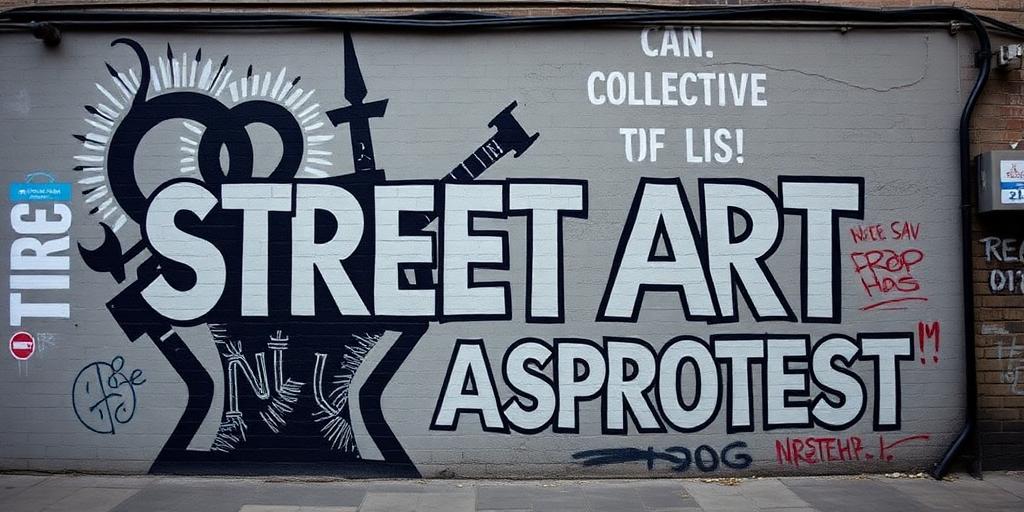Street art has long transcended mere aesthetic embellishment, evolving into a potent and visceral form of protest. Throughout history, from ancient cave paintings to contemporary urban murals, visual expression has served as a powerful medium for challenging authority, voicing dissent, and mobilizing public opinion. This inherent accessibility and public nature make street art an exceptionally effective tool for activism, bypassing traditional media channels and directly engaging communities.
The Unfiltered Voice: Why Street Art Resonates as Protest
Street art's effectiveness as a protest vehicle stems from several key attributes. Firstly, its unrestricted public presence ensures broad visibility, reaching diverse audiences who may not actively seek out political discourse. Unlike gallery art, it is democratic and inescapable, confronting viewers in their daily lives. Secondly, its often ephemeral nature imbues it with urgency; pieces can appear overnight and vanish just as quickly, reflecting the rapid pace of social and political change. This transient quality can heighten its impact, compelling immediate engagement. Lastly, the direct and often anonymous communication inherent in many forms of street art allows for bold statements that might be censored or diluted through official channels. It speaks directly, without filter, creating an immediate dialogue with the urban landscape and its inhabitants.
Historical Trajectories of Urban Art Protest Movements
The lineage of protest street art is rich and varied. During the Mexican Revolution, muralists like Diego Rivera and José Clemente Orozco used public walls to chronicle societal struggles and champion revolutionary ideals. The civil rights movement in the United States saw the emergence of powerful murals depicting racial injustice and calls for equality. More recently, the fall of the Berlin Wall was punctuated by graffiti on the wall itself, a testament to the power of individual expression against oppressive regimes. These historical precedents underscore street art's enduring role in documenting and influencing major socio-political shifts, cementing its status as a vital component of graffiti activism.
Diverse Manifestations of Dissent
The spectrum of street art utilized for protest is wide, encompassing various techniques, each with distinct advantages:
- **Graffiti:** From intricate tags to powerful political slogans, graffiti offers raw, immediate commentary. Its clandestine nature often enhances its rebellious appeal.
- **Stencils:** Popularized by artists like Banksy, stencils allow for rapid reproduction and dissemination of poignant, often ironic, imagery. They blend artistic sophistication with protest immediacy.
- **Murals:** Large-scale, often collaborative works, murals can transform entire urban spaces into canvases for extensive narratives of community struggle or aspiration.
- **Paste-ups and Stickers:** These quickly deployable forms offer accessible ways to spread messages and imagery across various surfaces, creating a widespread visual dialogue.
- **Installations:** Temporary or permanent sculptures and interventions can interact with public space in unexpected ways, drawing attention to specific issues through direct physical presence.
Each method contributes uniquely to the broader tapestry of political street art, leveraging visibility and creativity to amplify voices.
The Impact and Challenges of Protest Art
The impact of protest art is undeniable. It serves to raise awareness about critical issues, foster collective identity among activists, and provoke thought and discussion within the wider public. By transforming public spaces into arenas of debate, street art can subtly—or overtly—challenge dominant narratives and contribute to social change. It gives a voice to the marginalized and often acts as a visual barometer of societal unrest.
However, street art as protest is not without its challenges. Legality remains a perpetual concern, with much of it existing in a grey area between vandalism and legitimate expression, leading to swift removal by authorities. Interpretation can also be subjective, and the message may be lost or misinterpreted. Furthermore, the very act of commodification or mainstream recognition can sometimes dilute the rebellious spirit of the work. Despite these hurdles, its raw power and inherent democratic spirit ensure its continued relevance.
In conclusion, street art stands as a testament to the enduring human need for expression and dissent. It is a dynamic, ever-evolving force in the realm of activism, continuously adapting to new technologies and social landscapes. As long as there are injustices to confront and voices to amplify, the walls of our cities will remain potent canvases for protest, asserting itself as a vital component of contemporary social and political discourse.









